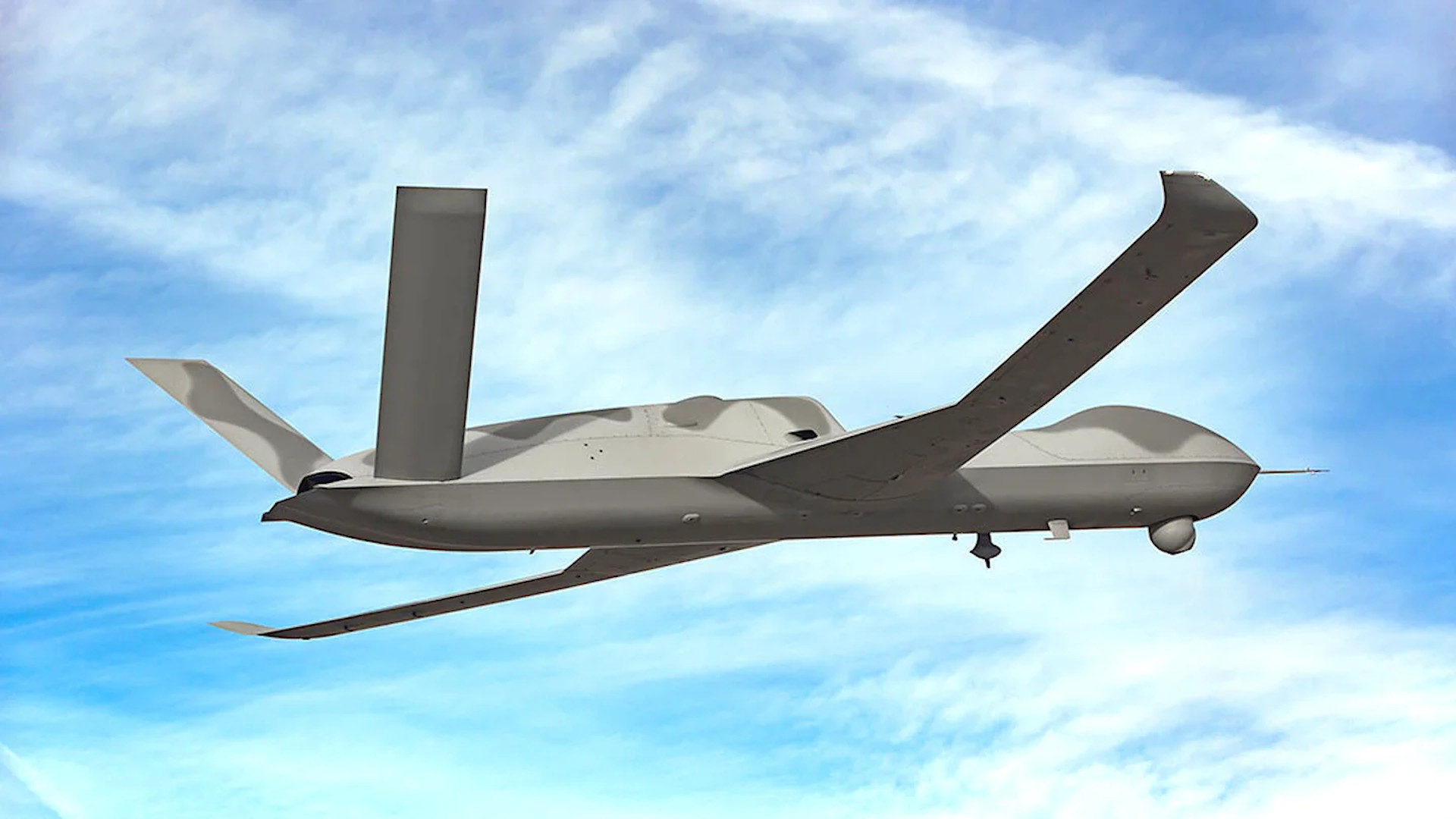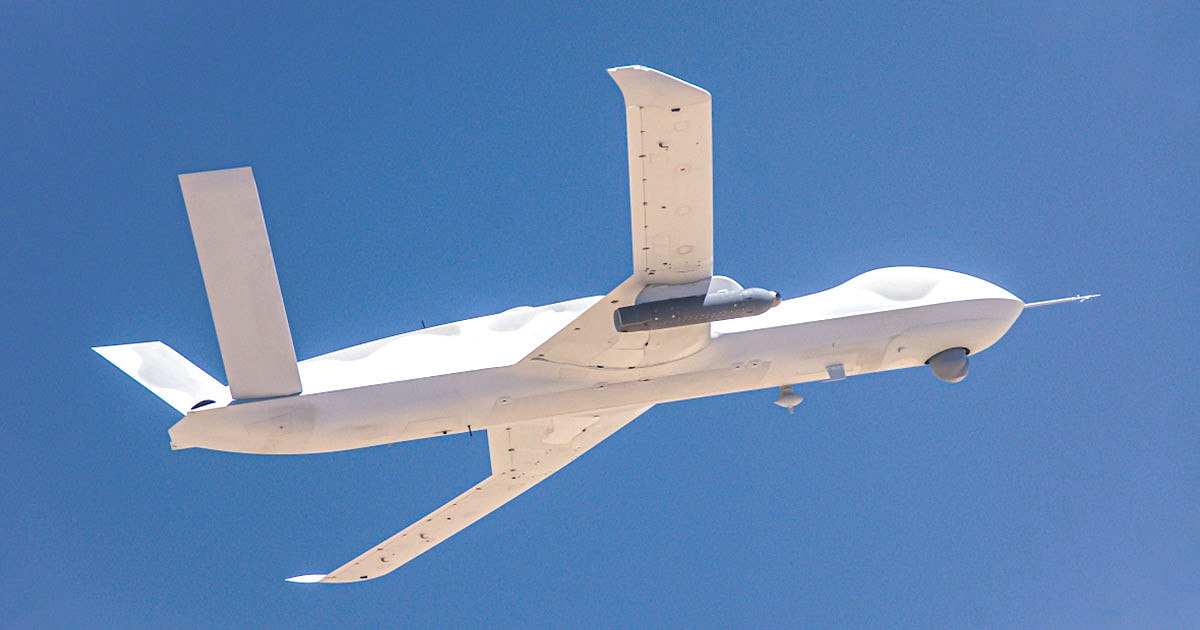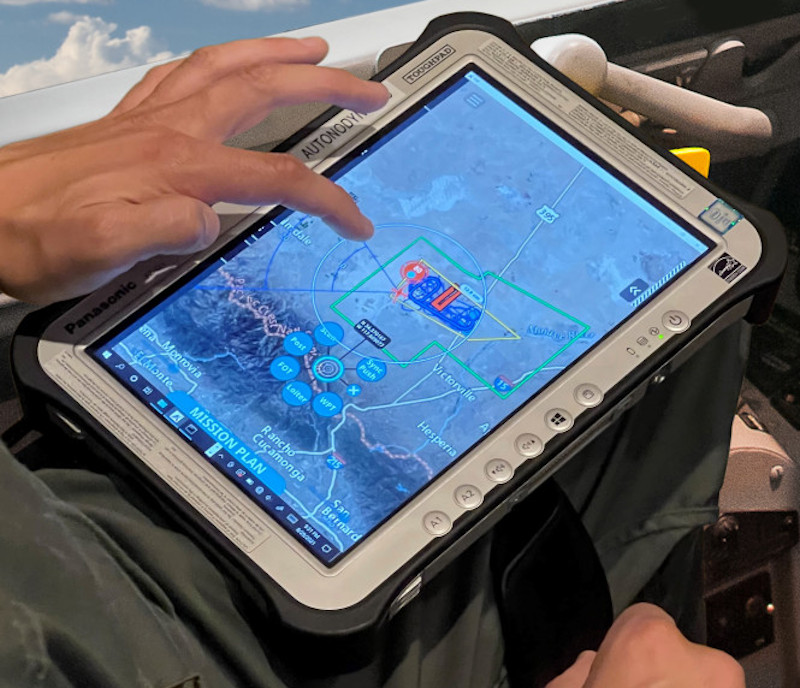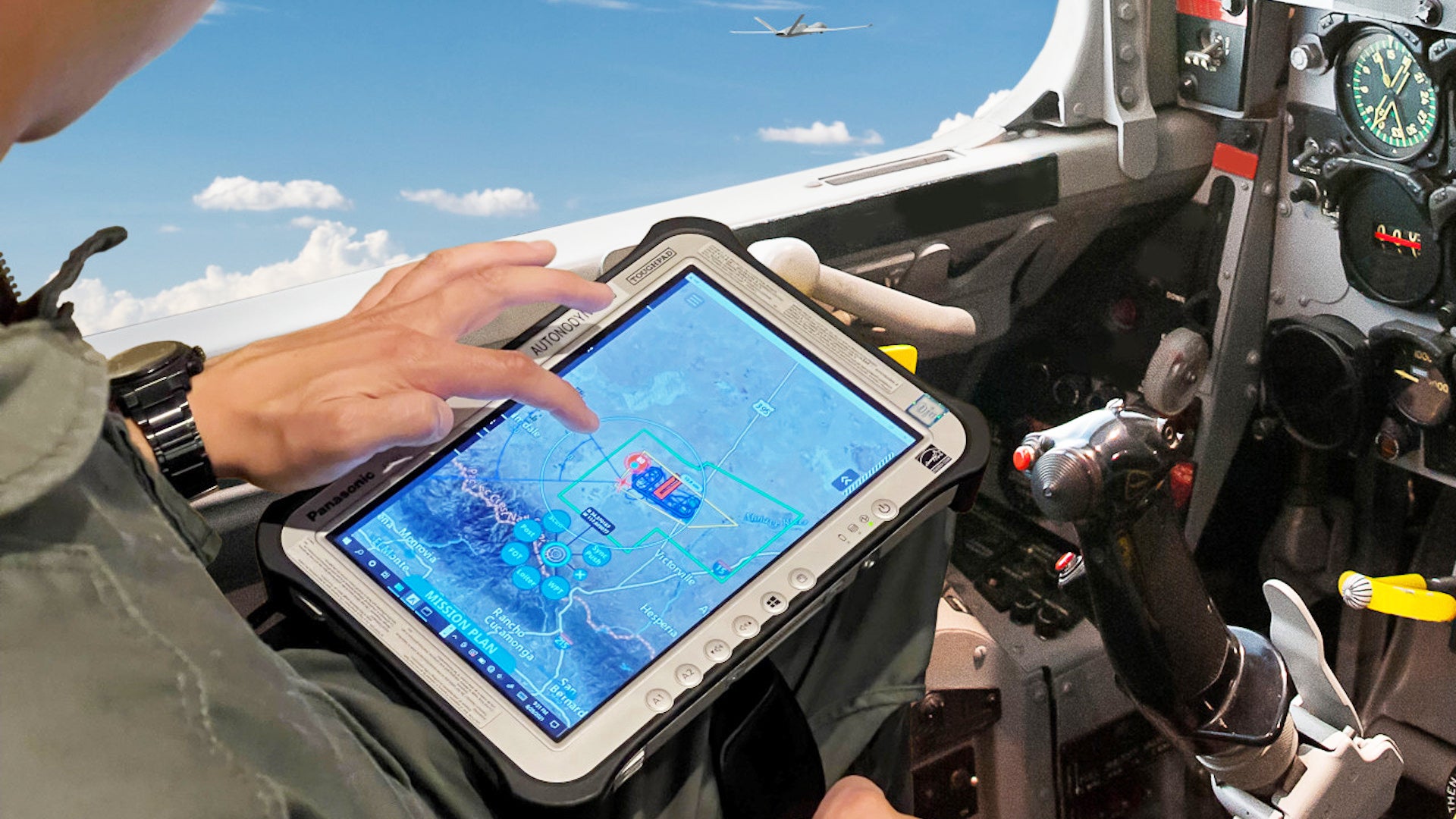General Atomics Aeronautical Systems, or GA-ASI, recently announced that it had conducted a demonstration to show how pilots in fourth and fifth-generation fighter jets will work together with advanced semi-autonomous “loyal wingman” type unmanned aircraft in the future. During the test, an individual riding in a specially-configured Beechcraft King Air twin-engine turboprop, acting as a surrogate for a fighter jet, was able to issue commands to a stealthy Avenger drone through a software app loaded onto a tablet-like device.
GA-ASI announced the successful completion of the demonstration in a press release on Sept. 3, 2021. The actual test had taken place in the skies over southern California on Aug. 25. The Avenger flew from the company’s Desert Horizon facility in the Mojave Desert, while the modified King Air operated from San Diego’s Montgomery-Gibbs Executive Airport.

“The demo lasted for approximately two hours,” according to the press release. “The successful test proves the ability for GA-ASI MUM-T [manned-unmanned teaming] to command airborne assets while autonomously executing behaviors and missions that provide increased awareness and effectiveness to the warfighter.”
“This flight builds on the previous long-wave IR passive autonomous testing, and continues to validate that persistent Group 5 UAS [unmanned aircraft systems] aircraft can perform complex Air Moving Target Indication (AMTI),” Mike Atwood, GA-ASI’s Senior Director of Advanced Concepts, said in a statement. Group 5 refers to the highest tier in the U.S. military’s drone categorization system, which includes any unmanned aircraft with a weight of more than 1,320 pounds and that have a “normal operating altitude” of at least 18,000 feet.
Atwood appears to have been referring to multiple tests that GA-ASI has conducted in the past year or so involving Avengers conducting mock aerial search missions, including flights involving drones equipped with Lockheed Martin’s Legion Pod with the IRST21 infrared search and track (IRST) sensor, with varying degrees of autonomy. In July, an Avenger carrying a Legion Pod demonstrated its ability to autonomously spot and track targets, as well as pursue them.

IRST systems, which you can read more about in detail in this past War Zone feature, offer a way for fighter jets to detect and track hostile aircraft and other threats without actively using their radars. This, in turn, means friendly aircraft don’t have to give their presence, or even potential location, away by sending out radar waves. An enemy pilot may not even know they have been detected, either. IRST sensors also work irrespective of any radar-absorbing features on an opponent’s aircraft and are immune to electromagnetic jamming, making them valuable alternatives to radars in environments full of hostile electronic warfare assets or stealthy combat aircraft.
What GA-ASI has been highlighting with all of these demonstrations is how Avengers, or other loyal wingman-type drones, might be expected to operate networked together with manned fighters to conduct aerial combat missions. The drones would provide increased sensor range and coverage across a broad area for the entire group and their sensor data could be fuzed together with information from other offboard sources to give fighter pilots significantly increased battlespace awareness. This, in turn, would help those pilots to determine the best course of action to prosecute those threats, or even just avoid them.
This core concept of operations is not necessarily new and one of the more interesting things to come out of this latest GA-ASI test is a look at an actual interface that pilots could use to control their pilotless wingmen. “The flight demonstrated autonomous collaboration using command and control (C2) of the Avenger from a ruggedized tactical control tablet, integrated with Autonodyne’s RCU-1000 Advanced Human Machine Interface, to provide real-time situational awareness combined with complex behavior tasking,” according to the GA-ASI press release.
Autonodyne, the company behind the RCU-1000, describes it as a “software wrapper,” effectively an app that provides a visual user-friendly interface to present incoming data from friendly drones and a way to issue various commands, either to an individual unmanned aircraft or networked groups of them. Of course, an aircraft still needs the requisite data links and associated systems to send and receive that information, to begin with.

The video below offers additional examples of the kinds of functionality that came be provided through the RCU-1000.

In addition, the RCU-1000 is what is often referred to as ‘platform agnostic,’ meaning that it isn’t designed specifically to control any particular type of drone. Beyond the Avenger, Autonodyne’s website says that the RCU-1000 has been used to operate “literally dozens” of different kinds of drones. The list of examples also includes Kratos’ UTAP-22 Mako, another loyal wingman-type design that the U.S. Navy, and now the U.S. Air Force, has been experimenting with in recent years.
The UTAP-22 has notably been the initial platform the Air Force has used to carry systems developed under its Skyborg program. The overall goal is of Skyborg, which GA-ASI is also involved in, is to develop an artificial intelligence-driven “computer brain,” and associated systems, that will be capable of flying semi-autonomous loyal wingmen, as well as potentially fully-autonomous unmanned combat air vehicles (UCAV). While GA-ASI’s press release regarding this demonstration involving the Avenger in August did not specifically mention Skyborg, it is not hard to see how the RCU-1000 interface could also be utilized to support that effort.
In addition, the RCU-1000 also does not require a specific piece of hardware to run it on. GA-ASI used a version of the software loaded onto a tablet during the August test. This would be a relatively easy way to integrate this control interface, and the loyal wingman capability that comes with it, into various manned fighter jets, as well as other aircraft, on a broad scale, and do so rapidly at low cost. Aviators across the U.S. military, as well as others, already use thigh-mounted tablets for other purposes, so it’s very possible, if not plausible that this control concept could readily leverage existing hardware.

Of course, at the same time, with digital, highly customizable touch-screen displays becoming an increasingly common feature in the cockpits in new and upgraded combat aircraft, it is very possible that a peripherical might not be necessary at all to add this functionality into many future fighter designs. As time goes on, more advanced user interfaces may also become available.
In the meantime, as GA-ASI, among others, continues to make significant strides in the development of autonomous and semi-autonomous drone technology, there is a growing need for systems that will allow crews of manned aircraft to work directly with these unmanned platforms. A future where fighter pilots have the ability to order around pilotless wingmen using something as simple as a touch-screen tablet on their thigh is quickly becoming a reality.
Contact the author: joe@thedrive.com
